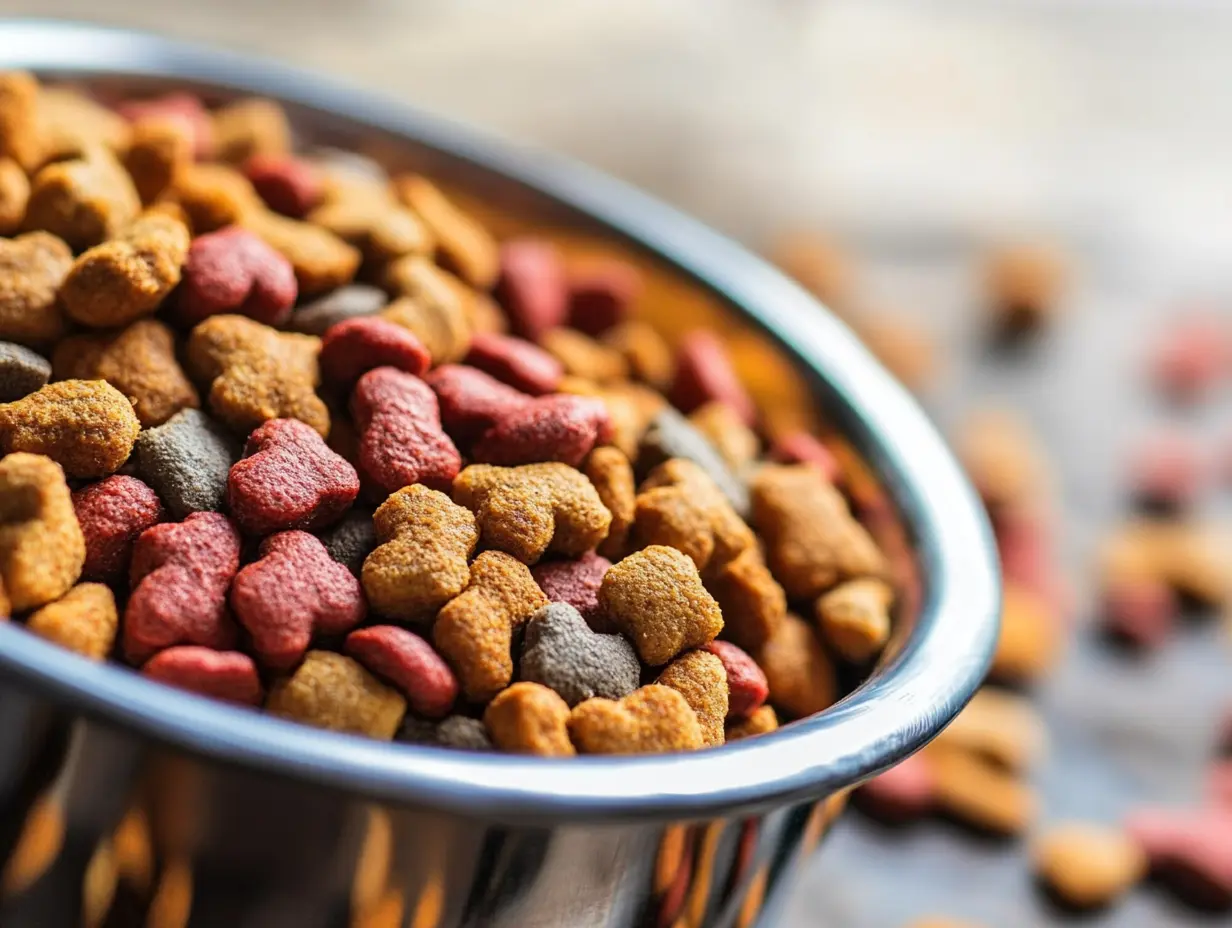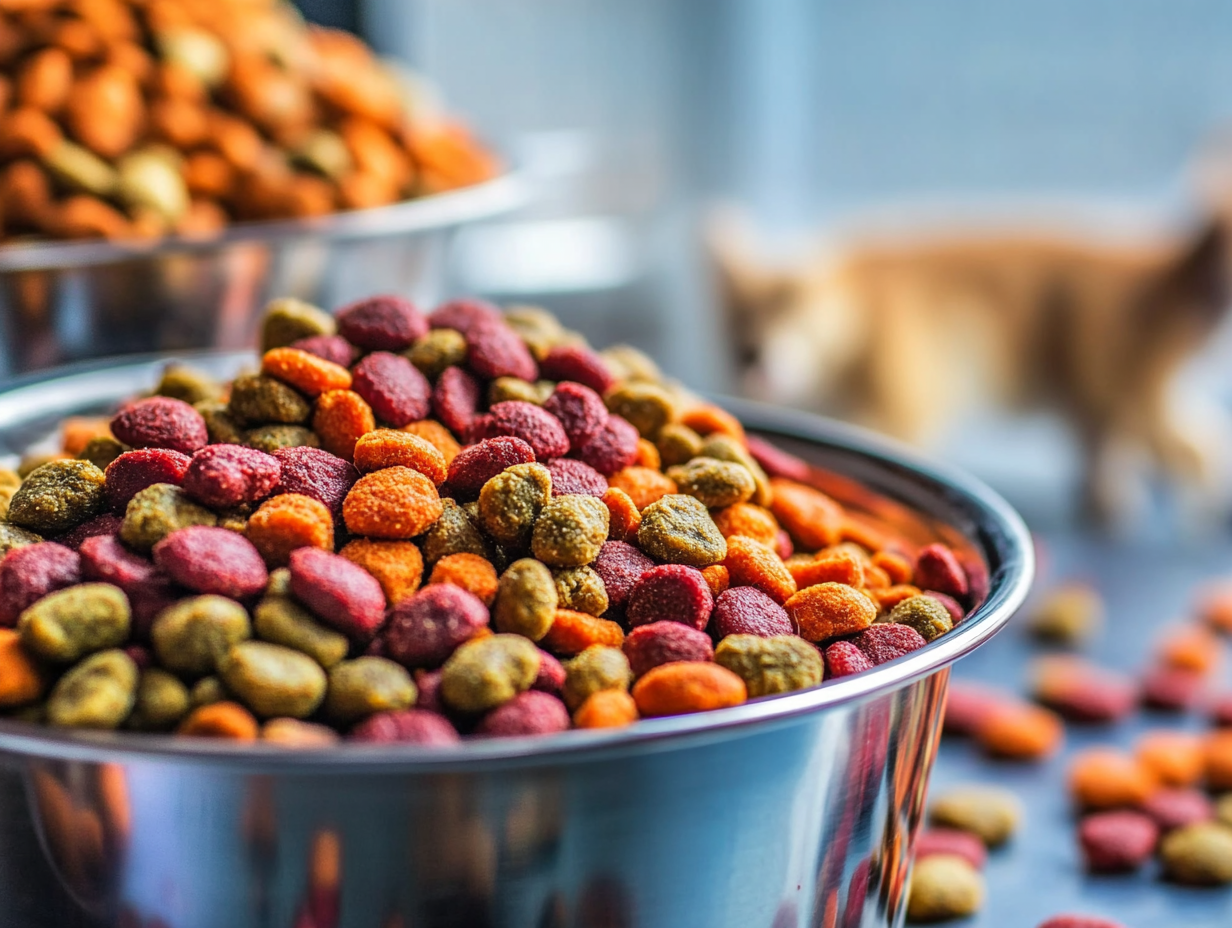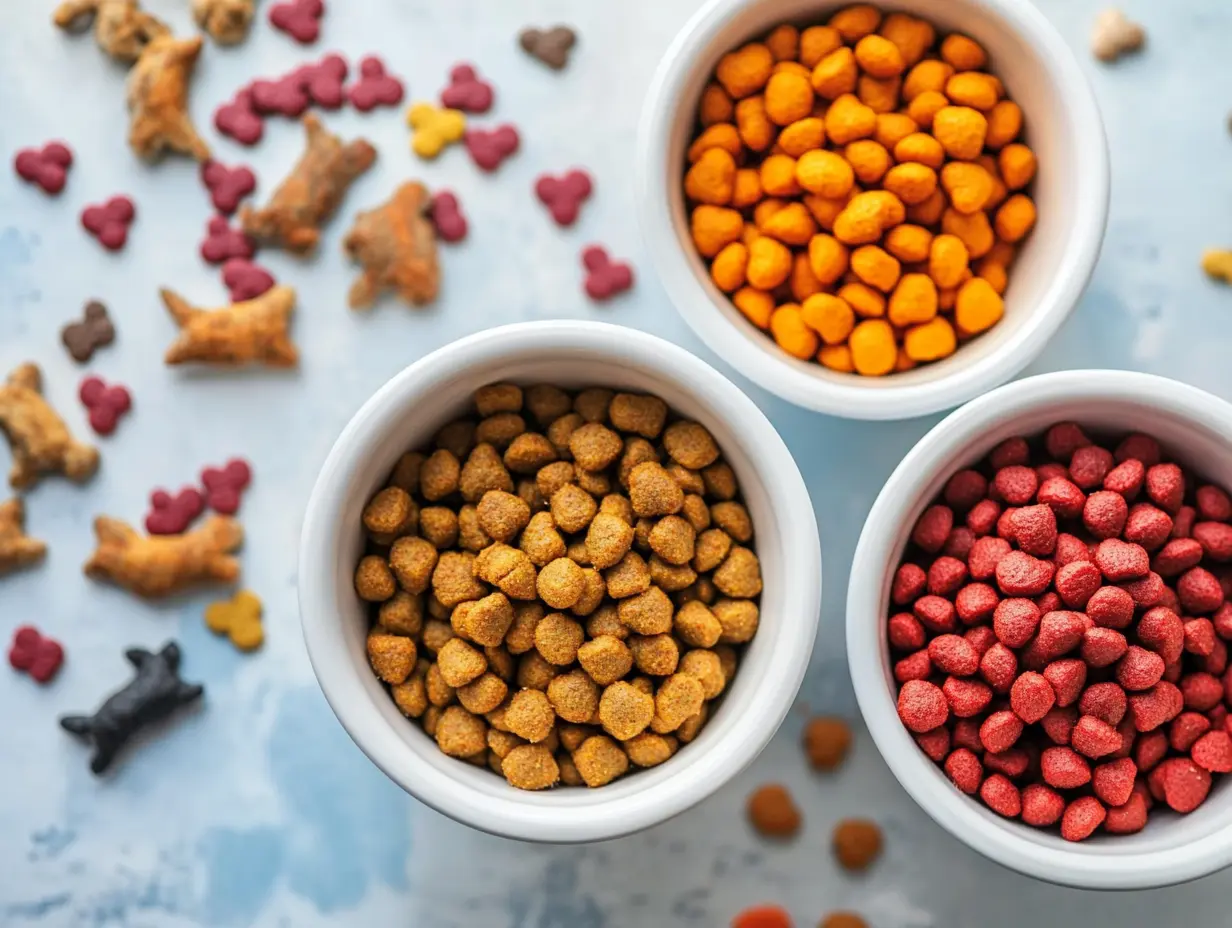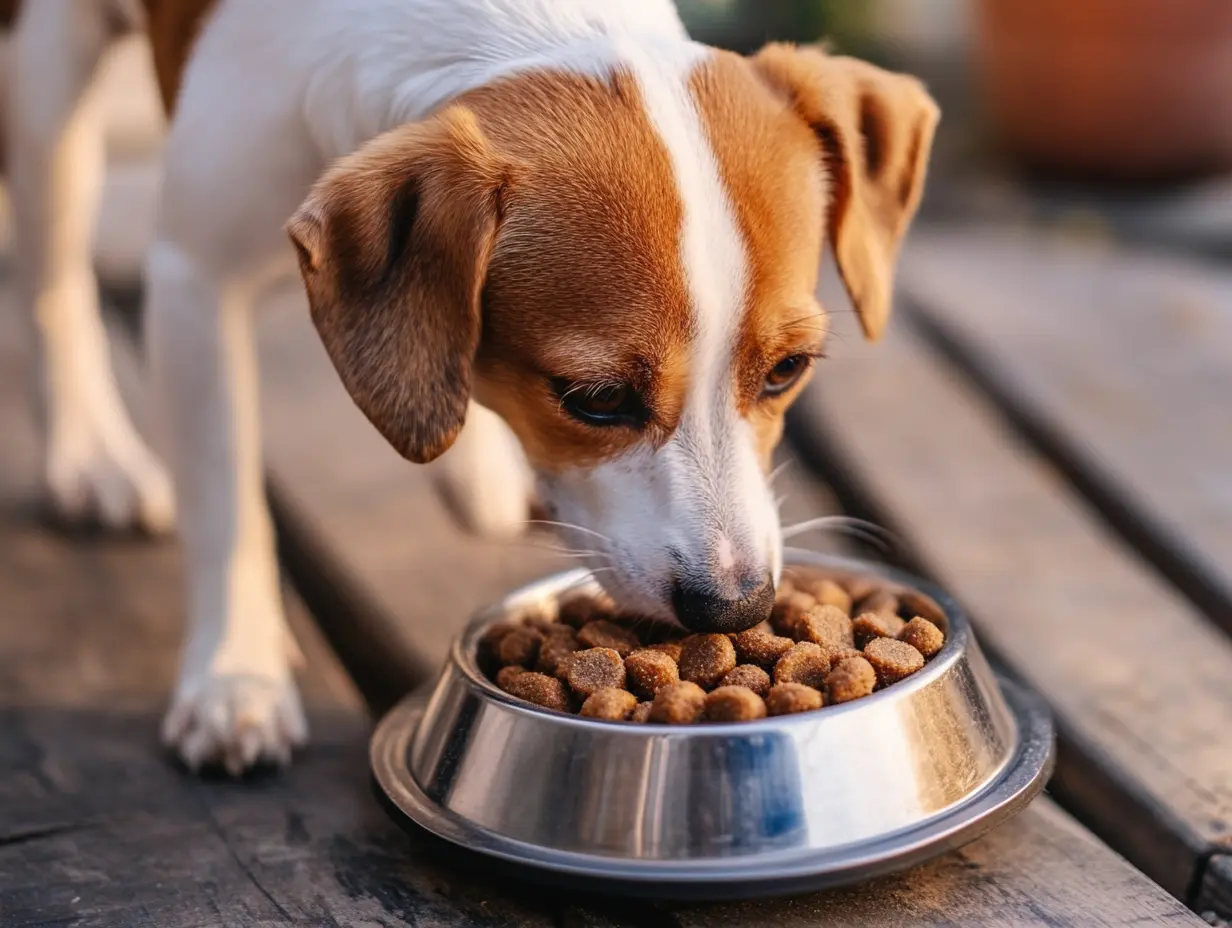Although the pet industry grows and thrives globally, the understanding that continues to evolve will focus on pet food production and consumption as it becomes increasingly important. The continuing emphasis on nutrition, ingredient sourcing, and sustainability has inspired an altered approach toward developing and marketing pet food products. Today the pet owner is more discerning, wanting only quality products, specialized diets for their furry companions. Such a shift neither influences the consumer choice but also drives the innovation in the industry.
Now Kederun Pet Food Co., Ltd. understands such trends and has made changes in its manufacturing practices to adapt to the burgeoning demand for premium pet food products. Quality and sustainability for us lie in responsible sourcing, scientific formulation, and transparency through the entire process. This blog post aims to showcase how global trends in pet food production have evolved and disseminate information about consumer preferences and industry progressions around the future of pet nutrition. Here is what you need to know to take effective strides into this volatile market.

Another consequence of increased pet ownership is an enhanced food demand, thereby giving momentum to and creating new trends in the pet food industry. Because watering-caring pet owners are now more concerned with individualized products that harness organic ingredients and sustainable practices, this indicates a larger view of entire lines of products for our pets that human consumers seek for in the market, with preferences incredibly close to that of the person's type of diet and values. In turn, the pet food industry exhibits tremendous growth; the other side of this is the human-grade pet food segment, which is projected to reach $2.41 billion in 2023. The premium pet food demand continues to grow, and with it, the interest of the companies to pack new processing technologies and packaging. Lately, aspects like protein shifts and traceability have become significant trends as consumers demand more information about quality and sourcing of their dog foods. This is apparent in the rising number of pet food facilities aiming to meet the increasing demand, suggesting that the industry is ripe for further innovation and expansion.

Development in the pet food industry is finally catching up to the various important trends that will drive it from today into 2024 and beyond. The most visible is the increasing demand for pet foods that are human grade, with more emphasis on health and quality by consumers in general. The preparation and nutrition of nutrition become critical for pet owners, and more are interested in making the products close to what they can eat themselves. This may open up a very large market, which even statistics predict will grow considerably in the coming years.
Additionally, novelty pet treats featuring air-dried and freeze-dried variants are gaining traction, being the most critical emerging trend. This falls in line with the ever-increasing popularity given by pet owners to healthy and convenient snacks made available for pets as a result of growing humanization of pet care. There are still sustainability and customization on their own as emerging significant considerations of pet food production and marketing. Now, nearly every brand of pet food has to do something about the requirements with which consumers have come to stay ahead in a rapidly growing market.

The pet food sector is undergoing a significant change, and perhaps technology is to be blamed for it. With an expected growth to $161 billion by 2028, innovations in manufacturing are now outpacing the market demand for high-quality nutritional products. Heavy investments have gone into infrastructure, with $1.5 billion going toward greenfield projects and expansions over the last 18 months to enhance food manufacturing efficiencies and sustainability.
Furthermore, the potential offered by technology will shape the formulation of products and enable nutritionists and dietitians in creating specific diets addressing the peculiar health needs of these pets. For the first time, trends such as the quest for human-quality ingredients as well as nutritional supplements have reflected the growing consciousness of pet owners regarding the dietary needs of their pets. The pet food products will continue evolving in 2024 and beyond by utilizing modern technology to improve the health and welfare of our beloved pets.

In 2024, sustainability practices in pet food manufacturing took the front seat as more customers made calls for eco-friendly pet food. Innovations in fresh, functional recipes were combined with more sustainable methods of packaging, reflecting the growing consciousness of pet owners regarding the environmental impact of their purchases. This is not just a trend but part of the response to global challenges, causing leading brands to reconsider their methods of production.
Pet foods will be growing well due to a still-high demand for organic products, coupled with the effects of technology. So as the market moves forward, ingredients such as potato protein are becoming more popular across-the-board-a trend toward the health-conscious pet owner. This reflects industry sustainability in high-quality nutrition for pets while heading toward 2025, where such practices will integrate probably into the frameworks of future pet food production worldwide.
As the trends in the global pet food market evolve more rapidly, various regulatory challenges evolve alongside. Demand for personalized, natural, and sustainable pet products is galloping forward, forcing manufacturers to contend with a labyrinthine array of regionally divergent regulations. Companies want to cater to consumer preferences for human-grade pet food, but at the same time are being scrutinized for sourcing of ingredients, standards of labeling, and nutritional claims.
In addition, production modes are disrupted by trends of protein diversification and traceability. Not only are companies considering the nutritional aspects of their products, but they are also challenged to maintain transparent supply chains compliant with local regulations. Increased accountability pushes the industry toward a more stringent standard that has serious implications for production processes and cost structures. Understanding these hurdles becomes the linchpin for the stakeholders if they are to be successful in the ever-expanding global pet food market.
All these facts reflect that trends in the pet food industry are increasingly consumer-driven-from the emergence of personal, ever-natural and sustainable products to increases in the number of pet ownerships of households that now seek pet products that reflect a more "human" approach to nutrition. And this trend is bringing into force a growing demand for more convenience-oriented premium items to suit the lifestyle of a modern-day pet owner.
Heavy investment is taking place in research and development because the global pet food market is expected to have a significant growth rate in the years ahead. Thus, many companies have come out with their new innovations with respect to their product offerings like customizable meal plans and on-the-go solutions for busy pet parents. Moreover, the trend toward natural and sustainable ingredients compels pet food manufacturers to rethink their sourcing and production methods, in accordance with health and ethically produced pet food the consumers are interested in.
PET NUTRITION GLOBALLY KNEW THE CHANGE. SO, TO HEALTH AND WELLNESS, THIS BEGAN TO TAKE CENTER STAGE. THE DEMAND FOR HUMAN-GRADE PET FOOD IN ITSELF EXEMPLIFIES THE CHANGE, AS CONSUMERS GRAVITATE TOWARDS HIGH-QUALITY, NUTRITIOUS OPTIONS FOR THEIR PETS. SIGNIFICANT GROWTH IN THE MARKET IS FORECASTED DUE TO THE EVER-INCREASING PREFERENCE FOR TRANSPARENCY AND GOOD QUALITY IN THE INGREDIENTS THAT GO INTO PET FOOD.
IN ADDITION, PERSONALIZATION IS THE NEXT BIG TREND, WITH PET OWNERS RELATING THESE TAILORED NUTRITION SOLUTIONS TO THEIR PET'S ARCHITECTURE OF HEALTH NEEDS. THIS TREND GOES HAND IN HAND WITH THE SHIFT TO NATURAL AND SUSTAINABLE INGREDIENTS, A WAVE REFLECTING THE BROADER DEMAND FOR HEALTHY PRODUCTS. The future of this industry-driven production is clear in that pet food will always endorse what constitutes overall wellness for its furry companions, in tune with today´s value system in nutrition.
The pet food industry as we see it in 2025 comes with many wonderful exciting trends. Not that the market value, which is overshadowing the $150 billion market, is going to slow down in any direction. Its projections have it heading towards 187.5 billion. Innovations in fresh and functional recipes with eco-friendly packaging have a high chance of acceptance from customers as they are proving to be more popular among consumers for healthy, sustainable pet foods.
Moreover, niche segments like freeze-dried dog food seem to be gaining consumer interest, expecting a 5.4% CAGR by 2030. Additionally, the pet treats market is dynamic because pet owners demand more about high-quality nutrition in treats. While such trends build up, they put the industry on a path for growth as pet owners pay more attention to their pets' welfare and making green choices in their decision-making.
Pet food marketing is undergoing a watershed transformation in response to changing consumer needs. The market is set to expand by another USD 41 billion from 2024 to 2028, with organic products and alternative protein sources rising in prominence. Trends toward healthy choices, such as vegan and grain-free pet foods in response to modern pet owner concerns, can be seen.
Technological intervention is paramount, and from this point, AI is assisting companies in deciphering market trends and consumer behaviors. Pet food is seeing rapid innovation, with AI analysis providing insights into the new products that address the standards of today.. Furthermore, while there was some slight decline in volume, European sales of pet food were recorded at EUR 29.2 billion in 2022, demonstrating that the market is resilient amid mounting challenges. The overall pet food sector continues to grow, further validating its place in the global food scenery.
Innovations in recipes and ingredients are transforming the pet food industry. Consequently, coming 2024, the biologically functional recipes here become ever fresher, offering something worth looking into rather than just palatability related human health benefits. These trends point towards increasingly aware pet owners between the growing numbers of very specific niche health products but more about the targeted health benefits of other types of supplements or ingredients.
Another feature is wholly sustainable packaging responding to the environment-conscious user. Brands are now trying on adopting alternative materials to secure a reduced carbon footprint and align pet food production with global sustainability goals. Currently, considering the continuous growth of expected future demand projected to hit an USD 187.5 billion mark, quality ingredients and responsible packaging practice will be shaping the future of pet care. Everything about supply chains all through consumer choices come 2025 onward will continue affecting pet care.
The transformation is primarily driven by evolving consumer preferences, leading to a growing demand for organic products and alternative protein sources.
The pet food market is projected to grow by USD 41 billion during that period.
Consumers are increasingly seeking healthier options, including vegan and grain-free pet foods.
Technology, particularly AI, is helping businesses understand market trends and consumer behavior, guiding the development of innovative products.
There is a surge in demand for human-grade pet food, as consumers prioritize high-quality, nutritious options for their pets.
Pet owners are looking for tailored nutrition solutions to meet their pets' unique health needs.
There is growing emphasis on personalization, natural ingredients, and sustainability, leading manufacturers to adapt their sourcing and production methods.
Innovations include customizable meal plans and convenient on-the-go solutions for busy pet owners.
European sales of pet food reached EUR 29.2 billion in 2022.
The future indicates a focus on providing diets that promote overall wellness for pets, aligning with modern values in nutrition.

